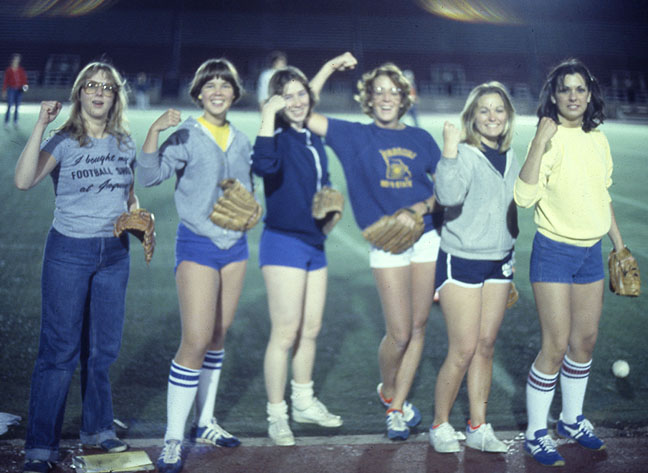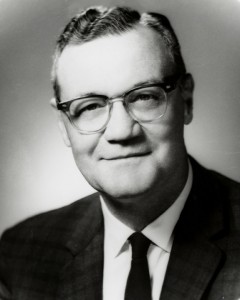(In celebration of the University Archives’ upcoming 50th Anniversary in 2015, we bring you “The Twelve Days of Buckeyes.” This is the last of a series of 12 blog posts highlighting the people who were instrumental in the creation and growth of the Archives. Stay tuned for more posts and other announcements related to our anniversary celebration next year.)
It’s been nearly 30 years since Woody Hayes’ death, yet his legacy is still very much alive for many people. Even OSU students who hadn’t yet been born when he died in 1987 know about Hayes. And although many these days can’t name many details – such as the fact that he still has the most national championships of any OSU football coach – they almost invariably can recall that he was some kind of an important figure at the University.
We would like to think that the Archives contributes a little to this continuing legacy.
The Archives has housed the Woody Hayes Papers since 1990, when his widow, Anne, donated them to the University. The collection includes papers, books, awards, memorabilia, photos and other effects.
Though it is larger than most, the collection of roughly 75 boxes is very similar to the dozens of faculty and staff collections housed here. Each collection’s materials document the careers of the people who have worked at OSU. Like many of these collections, though, Hayes’ goes beyond mere documentation of a career. His materials reflect a person whose job title was coach, but whose contributions to the University and community went far beyond that. Consider:
– Photos from his own U.S. Navy service during World War II. In these, Hayes is incredibly young but already shows leadership skills that would he would use for 27 years as OSU football coach. (He achieved the rank of Lt. Commander and was in charge of both a patrol boat in the Palau Islands and a destroyer escort.)
– A wooden clock with a plate inscribed “Bryant-Foust Crippled Children’s Day Award presented to Woody Hayes…,” given to him in 1986. Hayes was a big supporter of charities that involved children and regularly visited patients at Columbus’ Children’s Hospital.
– Correspondence with VIPs that include the likes of Bob Hope and Richard Nixon, both of whom Hayes considered friends. Nixon even gave the eulogy at Hayes’ funeral.
– A videotape of Hayes’ speech at the 1986 Winter Commencement ceremony, just a year before he died. It shows a frail, elderly but grateful man who was still spurring people to “pay it forward.”
As Hayes’ encouraged, we at the Archives hope we can “pay it forward” to the community by not only preserving such materials but making them available to researchers, classes and the community for years to come.
To learn more about Woody Hayes, please see our web exhibit commemorating the anniversary of his 100th birthday
You can also read a transcript of his Commencement speech.















Recent Comments